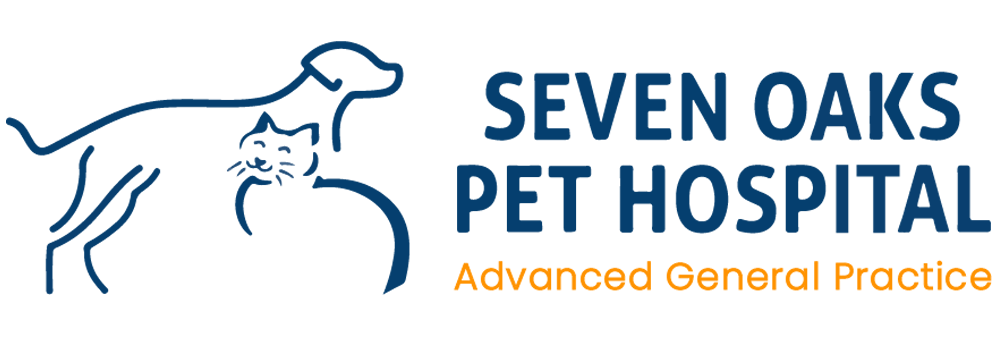Eye Enucleation
To download and print this information, please click here.
Enucleation (Eyeball Removal)
Enucleation is the removal of an eye. It is an irreversible method of treating various disorders of the eye. Reasons for enucleation include:
- Severe untreatable trauma, such as a perforated or ruptured eyeball
- Uncontrollable glaucoma
- Infections or inflammation on the surface or within the eye that is unresponsive to therapy
- Cancer of the eye
- Congenital deformities of the eye
- Diseases behind the eye, within the orbit
- Diseases within the eye that have the potential to spread to the rest of the body
Enucleation is also reserved as a last option to alleviate the pain associated with any eye problem, especially if the eye is blind and of no use to the animal. Enucleation and blindness are tolerated well by dogs and cats.
Veterinary Care
- Prior to enucleation, all medical attempts at saving the eye are usually tried.
- With the advances that have taken place over the last 20 years in veterinary ophthalmology, it is now possible to treat successfully many eye diseases that were not treatable before, and in many cases to save the animal’s vision.
- When cancer is diagnosed in or around the eye, when an eye is blind and persistently painful, or when the cost of treating the eye is too expensive for the owner, enucleation may be chosen as the initial treatment.
Pre-operative Tests:
- Preoperative tests depend in part on the age and general health of the animal as well as the cause for the enucleation
- Often a complete blood count, serum biochemical test, a urinalysis, and possibly an EKG will be performed prior to surgery.
Type of Anesthesia:
- General anesthesia is needed to induce unconsciousness, complete control of pain, and muscle relaxation.
- In the usual case, the pet will receive a pre-anesthetic sedative-analgesic drug to help him relax, a brief intravenous anesthetic to allow placement of a breathing tube in the windpipe, and subsequently inhalation (gas) anesthesia in oxygen during the actual surgery.
Surgical Procedure:
There are two surgical options for enucleation:
- Removal of all the tissues within the eye socket, including muscle and other tissues, is called an exenteration. This procedure is used primarily for the removal of a cancerous eye mass.
- Removal of the eyeball without taking all the surrounding tissue is referred to as enucleation and is the most commonly performed procedure.
- After removal of the eye, the eyelid edges are permanently sutured closed.
- In some instances, a silicone or plastic sphere is inserted into the eye socket (orbit) before the skin is sewn closed. This is done to prevent the skin of the face from sinking into orbit. It is only performed if there is no chance that infection or cancer was present in the eye or the orbit.
- Once the hair grows back in the area, the appearance of the dog is usually quite good.
Surgery Time:
- The procedure takes about 45 minutes to 1-1/2 hours to perform in most cases, including the needed time for preparation and anesthesia.
Risks and complications:
- The overall risk of this surgery is low. The major risks are those of general anesthesia, bleeding (hemorrhage), postoperative infection,and wound breakdown (dehiscence) over the incision.
- Overall complication rate is low, but serious complications can result in anesthetic death or the need for additional surgery.
Postoperative Care
- After surgery, the incision (suture site) must be protected until healing is complete.
- The dog may be sent home wearing an Elizabethan collar to prevent rubbing or traumatizing the surgery site.
- Oral antibiotics may be prescribed if the eye or orbit was infected at the time of surgery. If the animal is painful after the surgery, pain medication may be prescribed for a few days.
- There is usually some mild postoperative swelling at the site of the surgery, and if the eye was inflamed prior to surgery, then some bruising may also be noted in the area.
- If the dog allows it and takes comfort from it, warm wet compresses may be applied to the surgery site twice daily for five minutes.
- Occasionally the dog may have a little bloody discharge from the nostril on the same side as the surgery. These signs usually resolve within two to four days. The sutures are typically removed in seven to 10 days.
- Carefully monitor your pet after the surgery. If there is any sign of persistent swelling, if there is any oozing from the stitches, if the animal acts as if he is not feeling well, then notify your vet. Most animals are fully recovered from the surgery and are acting normal within 48 to 72 hours.
- Animals with one eye enucleated do not seem to be handicapped with respect to their vision, their mobility, or their ability to function. Animals with one eye usually behave in a completely normal fashion.



